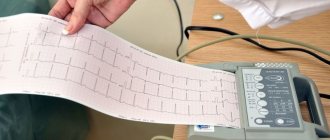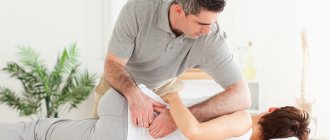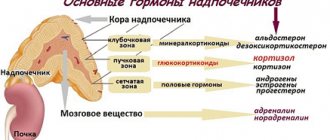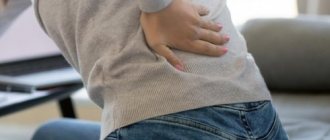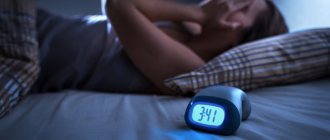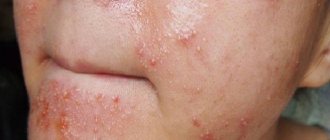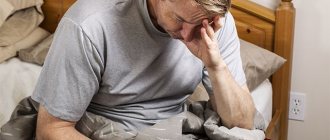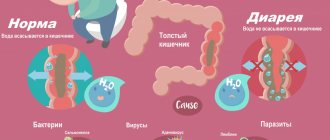Reading time: 6 min. 15 sec.
Cold hands and feet are a natural reaction of the body to hypothermia when a person walks outside in cold weather in thin shoes and without gloves. A decrease in the temperature of the extremities is also possible with insufficient physical activity. When we sit at a computer or desk for a long time, blood circulation is impaired, resulting in cold hands and feet.
If a person is constantly freezing, his fingers are always icy even in a warm room, he needs to consult a general practitioner. Cold hands can be a symptom of a serious illness. It is especially dangerous if constant chills are accompanied by numbness, tingling in various parts of the body, weight loss, tachycardia, and dizziness.
MedEx clinic doctors will determine the cause of cold hands and feet. We have modern diagnostic equipment to thoroughly examine patients.
Hormonal problems
Hormones produced by the thyroid gland are responsible for thermoregulation. If their level is reduced, a person feels chilly even in the heat. With advanced hypothyroidism (decreased thyroid function), body temperature can drop to 35 degrees.
Other signs of hypothyroidism include frequent infections (hormones are also responsible for maintaining immunity), dry skin, brittle hair, frequent constipation and constant drowsiness.
The cause of all illnesses. How to check your thyroid function? More details
To confirm (or refute) the diagnosis, you need to take a thyroid hormone test.
What are cold extremities?
Physiologically cold. The decrease in temperature occurs due to natural causes. When a person spends a long time in a cold room or on the street, his hands and feet begin to freeze. If you warm up, your limbs will gradually become warmer.
If an adult’s hands and feet remain cold even in hot weather, it is worth considering other causes of blood supply disturbances:
- sedentary lifestyle, staying in a position with legs tucked for a long time;
- recent frostbite of the hands and feet, after which normal blood circulation has not yet been restored;
- starvation, malnutrition;
- taking certain medications that cause vasoconstriction;
- disruption of the usual daily routine, for example, lack of sleep;
- smoking and drinking alcohol.
All of the above cases do not require treatment. It is enough for a person to restore his daily routine, adhere to the principles of proper nutrition and move more.
Pathologically cold. A decrease in the temperature of the extremities on a constant basis is a consequence of some disease. A person constantly has cold hands at normal temperatures and in hot weather. The condition does not go away for a long time. If you go to a warm room, drink hot tea, try to warm your hands, then nothing will work. In this case, you need to consult a doctor. The doctor will make a diagnosis and help you cope with the problem.
Low pressure
Low blood pressure has one serious advantage - it reduces the risk of heart attacks and strokes. Otherwise, the health of hypotensive patients leaves much to be desired. Throughout life they are accompanied by lethargy, drowsiness and chilliness.
Article on the topic
Tied to the mercury column. How does blood pressure affect life expectancy? With low blood pressure, blood circulates more slowly, which reduces vascular tone and causes a feeling of chilliness.
The best way to stay warm when you have low blood pressure is to exercise. Physical activity increases blood circulation, so it warms you up instantly. If you are too lazy to move, strong hot tea will help you warm up.
How do folk remedies help when old people have cold feet?
When old people are cold, one of the most effective ways to regulate blood circulation is warm baths.
We recommend
“Gymnastics for the elderly: the best exercises for various diseases” More
Common recipes for foot baths:
- Heat enough water in a large saucepan. Pour a mixture of 1-2 drops of soothing lavender, cypress and black pepper oil into hot water and carefully place.
- Mix a few teaspoons of argan oil with a couple of drops of eucalyptus oil and add to a container of hot water.
- Dissolve baking soda in hot water.
To achieve the desired result, such procedures should be carried out regularly for 10–20 minutes. After steaming, you need to thoroughly dry your feet, do a short massage and put on warm, clean woolen or cotton socks.
- Vinegar rubs.
It is important to take precautions: before rubbing with vinegar, you need to do a small warming massage, which will disperse the blood that has stagnated in the vessels.
Use natural 6% apple cider vinegar for rubbing; it helps reduce the risk of blood clots and normalizes blood flow. After the procedure, let your feet rest for 10–15 minutes; to enhance the effect, it is better to wrap your feet in a warm blanket.
- Pepper tincture.
Dilute a tablespoon of hot pepper in a glass of regular vodka and let it brew for 10 days. Then the liquid must be filtered and used to rub the skin of the legs before bed.
- Ointment with a warming effect.
If you are not allergic to red pepper, then mix it with any fatty foot cream, also adding a little camphor oil and rosemary extract if desired. Apply the product to the skin of your feet, let it absorb completely and then warm yourself well.
- Cocktail of honey and vegetables.
If older people are cold, to generally improve blood flow through the vessels, they are recommended to take a couple of spoons of a drink every morning from 200 ml of beetroot, carrot, lemon and horseradish juice mixed with 200 ml of natural honey.
Vascular problems
The feeling of cold is guaranteed to cause vasospasm. This problem, in addition to heavy smokers and patients with atherosclerosis, annoys people suffering from Raynaud's syndrome (spasm of the blood vessels in the hands in response to cold or emotional stress, which, in addition to discomfort, causes a change in skin color in the fingers). According to statistics, 3-5% of the population suffers from Raynaud's syndrome.
Relaxation methods (meditation, auto-training, sessions with a psychotherapist) help combat this condition.
There will be no catastrophe. How to protect yourself from a stroke? More details
What to do if old people have cold feet
Doctors will help you most accurately determine the causes of cold extremities.
We recommend
“How to care for a bedridden elderly person” Read more
Why old people get cold, we figured it out, now we’ll look at several effective methods of getting rid of the constant feeling of cold:
- To safely heat your shoes from the inside, you can put warm paper or a napkin in them, so you won’t damage their appearance.
- There is no need to wear many layers of clothing to enhance the effect; it is enough to wear two pairs of socks made from natural materials, with warmer ones last. This will ensure that you stay warm and will allow you to relax. However, make sure that the elastic band of the socks is not too tight, otherwise you will get the opposite effect, since the blood flow in the vessels of the legs will be impaired.
- Avoid getting your skin wet; keep your feet completely dry.
- You can purchase thermal insoles that can regulate the temperature in your shoes. They are extremely easy to use: they are charged from a power outlet, the batteries last up to 6 hours of continuous use, but you will have to choose shoes that are more spacious.
- Get closer to the ground, walk barefoot on the grass, and to enhance the effect, you can use special massage mats. You will notice significant improvements in blood circulation and increased energy.
- Make special foot baths with a calming and relaxing effect. Start to harden yourself by alternating between warm and cool showers.
- Spend more time outdoors, walk, run and lead a more active lifestyle.
- Minimize the number of cigarettes you smoke or completely give up unhealthy habits.
- Buy a foot massager or do self-massage using warming ointments and creams. But do not forget that a stable result will be noticeable only with regular procedures.
- Take comfortable postures and leg positions, make sure that there is no pressure on the vessels and blood circulation is not disrupted.
- Remove spicy, salty foods, as well as drinks containing caffeine from your diet.
- Wear loose shoes and keep your feet dry at all times.
- Drink enough clean water. The normal amount of fluid consumed for older people is 1.5–2 liters daily.
- Monitor your immune system. Drink vitamin complexes, eat foods high in vitamin C, and ensure the correct balance of proteins, fats and carbohydrates in the body.
Anemia
Hemoglobin is responsible for the delivery of oxygen to organs and tissues. If its level in the blood is reduced, oxygen deficiency (hypoxia) may occur, which is manifested by weakness, headaches, pallor, dizziness and a feeling of chilliness.
The main reasons for low hemoglobin are poor nutrition (low-calorie diets that include avoiding animal fats and proteins), as well as blood loss (prolonged heavy menstruation, diseases of the gastrointestinal tract, bleeding gums, etc.).
According to statistics, anemia is detected in 10-20% of the population (mainly in women).
Article on the topic
Two sides of vegetarianism. How does giving up animal foods affect your health? The easiest way to get rid of it is to become a meat eater. Plant foods also contain enough iron. But only divalent iron, which is present in meat products, is absorbed from food. And trivalent iron, which is found in plant foods, must first be converted into divalent iron. But this process does not always go smoothly for everyone. With low stomach acidity, for example, iron from plant foods is not retained in the body at all.
Therefore, it is better to lean on red meat, pork liver, cheese and lamb. These products will provide your body with the necessary level of iron (15 mg per day). It is also important to eat meat correctly - along with foods rich in vitamin C (fresh vegetables, fruits, herbs), which increases the absorption of iron.
Causes of cold hands and feet
Constantly cold extremities are one of the signs of vascular pathologies. The following diseases may be the cause of circulatory disorders:
- Diabetes. The pathology is characterized by fragility of small and large vessels, an increased risk of thrombosis;
- Raynaud's disease. Pathology provokes vascular neuroses - spasm of small arteries. A person simply cannot tolerate frost. When it's cold outside, blood circulation in the extremities decreases to a critical level;
- Obliterating endarteritis. The lumen of the vessels narrows, blood clots form, blood flow to the arms and legs becomes difficult;
- Vegetovascular dystonia (VSD syndrome). With this diagnosis, cold fingers and toes are often observed even in young people aged 20-25 years;
- Iron-deficiency anemia. Oxygen transport to body tissues is reduced. As a result, metabolic processes slow down and less heat is generated;
- Venous stagnation. One of the most dangerous conditions. My hands are constantly cold, pain occurs at night, and swelling appears in the morning. If venous congestion is not treated, the problem will develop into thrombosis and inflammation;
- Deviation of blood pressure from normal. Cold hands occur with both high and low blood pressure. Both conditions lead to impaired blood supply to the extremities.
There are also non-vascular reasons. For example, older people over 50 almost always have cold hands. This is a normal manifestation caused by the natural processes of aging, hormonal changes, and decreased immunity. Cold hands in adults occur with hypothyroidism, allergic reactions, heart failure, and damage to peripheral nerves. In heart pathologies, freezing extremities are accompanied by pale skin. Infection with parasites also leads to spasm of blood vessels and cooling of the hands and feet.
Infectious diseases
An increase in body temperature is always accompanied by chills. This is explained by the fact that the components of infectious pathogens (pyrogens) affect the thermoregulation center and increase body temperature.
Some infectious diseases can occur in a sluggish form, and their only symptom is constant chills.
Lose weight correctly. Modern methods of fighting fat Read more
